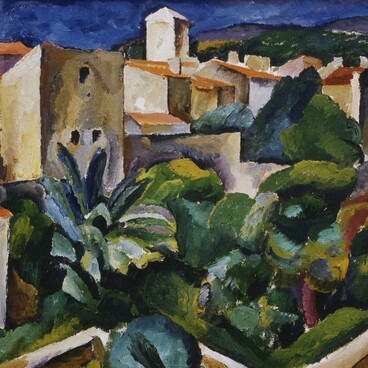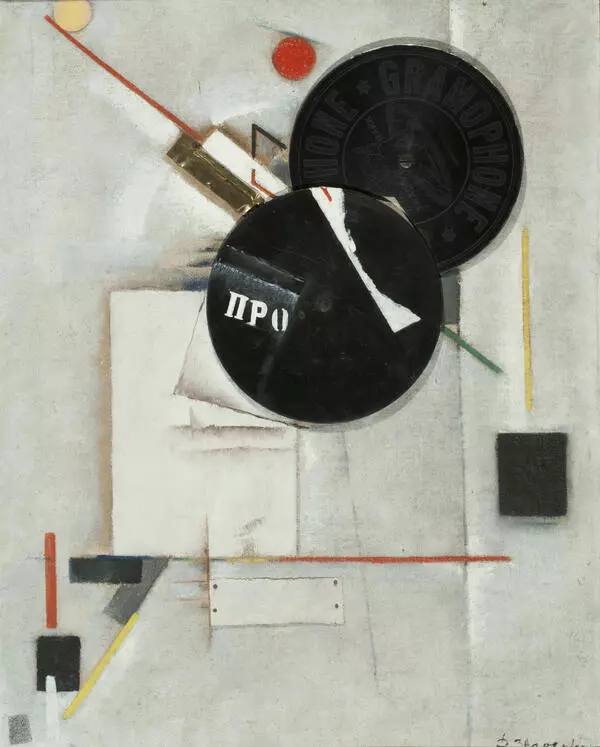The name of David Zagoskin, a renowned artist, graphic artist, and painter, is on a par with the names of those consequential masters of Russian art whose work developed throughout the 1920s and 1930s. The artistic formation and development for this artist fell on watershed years: the revolution of 1917, and the stormy, difficult, tragic twenties and thirties.
There are several works done by David Zagoskin stored in the A.N. Radishchev Saratov State Art Museum They date from the late 1910s to the early 1920s, when the artist lived and worked in Saratov. Even in these early works, the artist’s passion for new French art is noticeable. One of those works is Design of a Lamp. It dates from 1918, meaning it was created by Zagoskin when he was an apprentice. His interest in cubism is evident.
On a sheet that is small in size, there is an image of a kerosene lamp, a typical hallmark of those times. But this work cannot be called a still life - there is not even a hint of the desire to showcase the object. A regularly lamp with a weakly burning wick merely becomes the occasion for him to perform his own experiments. Zagoskin likes that the curves of the metal base are broken, and the precipitousness of the lines along the glass bulb. He is far from accurate in conveying the details of the object, their shape and texture, and does not really aspire to analyze the lamp’s design so much as to design the space around it. To this end, he uses paper appliques: in the upper part of the drawing, to the left of the image of the lamp, the artist pasted a piece of dense wallpaper next to a thin, slightly gleaming golden hue, which protrudes with a slight relief above the surface of the sheet.
In the overall structure of the drawing, where ink and gouache is placed on the textured surface of the watercolor paper, it helps to create a sense of spaciousness, both in front of and behind the lamp. A precise composition, a calibrated rhythm, a unified gray coloring that retains its integrity despite the multi-colored stickers, the conventionality of the artistic language - everything in this work speaks of an eighteen-year-old student’s readiness to perceive new ideas in art. The artist’s life and creative biography was building up successfully. Zagoskin moved to Leningrad from Saratov, and became a prominent figure among the masters. He was known as a teacher at the Higher Art and Technical Institute, a member of the ‘Circle’ association, and an active member of the Leningrad Union of Artists. After the tragic death of the artist in Leningrad, when it was under siege in the winter of 1942, almost all his works were lost.
There are several works done by David Zagoskin stored in the A.N. Radishchev Saratov State Art Museum They date from the late 1910s to the early 1920s, when the artist lived and worked in Saratov. Even in these early works, the artist’s passion for new French art is noticeable. One of those works is Design of a Lamp. It dates from 1918, meaning it was created by Zagoskin when he was an apprentice. His interest in cubism is evident.
On a sheet that is small in size, there is an image of a kerosene lamp, a typical hallmark of those times. But this work cannot be called a still life - there is not even a hint of the desire to showcase the object. A regularly lamp with a weakly burning wick merely becomes the occasion for him to perform his own experiments. Zagoskin likes that the curves of the metal base are broken, and the precipitousness of the lines along the glass bulb. He is far from accurate in conveying the details of the object, their shape and texture, and does not really aspire to analyze the lamp’s design so much as to design the space around it. To this end, he uses paper appliques: in the upper part of the drawing, to the left of the image of the lamp, the artist pasted a piece of dense wallpaper next to a thin, slightly gleaming golden hue, which protrudes with a slight relief above the surface of the sheet.
In the overall structure of the drawing, where ink and gouache is placed on the textured surface of the watercolor paper, it helps to create a sense of spaciousness, both in front of and behind the lamp. A precise composition, a calibrated rhythm, a unified gray coloring that retains its integrity despite the multi-colored stickers, the conventionality of the artistic language - everything in this work speaks of an eighteen-year-old student’s readiness to perceive new ideas in art. The artist’s life and creative biography was building up successfully. Zagoskin moved to Leningrad from Saratov, and became a prominent figure among the masters. He was known as a teacher at the Higher Art and Technical Institute, a member of the ‘Circle’ association, and an active member of the Leningrad Union of Artists. After the tragic death of the artist in Leningrad, when it was under siege in the winter of 1942, almost all his works were lost.




